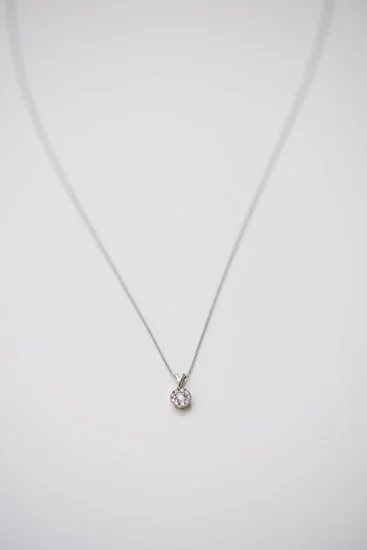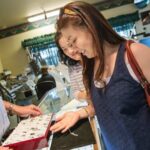Are you interested in learning how to make professional beaded jewelry? Whether you’re a beginner or an experienced crafter, creating your own beaded jewelry can be a rewarding and creative experience.
In this article, we will guide you through the process of making high-quality beaded jewelry that you can wear yourself or sell to others. From essential tools and materials to marketing and selling your handmade pieces, we’ll cover everything you need to know to succeed in the world of beaded jewelry making.
First, we’ll start with an introduction to beaded jewelry making, including the history and cultural significance of this timeless art form. Then, we’ll dive into the essential tools and materials required for professional beaded jewelry making, as well as tips for sourcing high-quality beads and supplies.
Understanding different types of beads and their uses is also crucial for creating stunning pieces, so we’ll discuss how to choose the right beads for your designs and how to incorporate them effectively.
Next, we’ll walk you through a step-by-step guide on designing and planning your jewelry piece, including tips for creating balanced and visually appealing compositions. Techniques for stringing and assembling beads will also be covered in detail, along with adding clasps, hooks, and other finishing touches to give your pieces a polished look.
Finally, we’ll offer valuable advice on achieving a professional finish on your beaded jewelry and share tips for marketing and selling your creations. So let’s get started on your journey to becoming a skilled maker of professional beaded jewelry.
Essential Tools and Materials for Professional Beaded Jewelry Making
Beaded jewelry making requires a variety of essential tools and materials to create professional-looking pieces. Whether you are a beginner or an experienced jewelry maker, having the right equipment and supplies is crucial for producing high-quality beaded jewelry. Here, we will discuss the essential tools and materials needed for professional beaded jewelry making.
Essential Tools
The first step in creating professional beaded jewelry is to gather the necessary tools. Some must-have tools include round-nose pliers, chain-nose pliers, wire cutters, bead reamer, bead mat, and a good quality beading needle. These tools will help you manipulate wires, beads, and other components as well as ensure precision and accuracy during the jewelry-making process.
Materials
In addition to the right tools, having a variety of high-quality materials is essential for making professional beaded jewelry. Beads come in various shapes, sizes, colors, and materials such as glass beads, gemstone beads, metal beads, and seed beads. Along with beads, you will need stringing materials like beading wire or thread as well as findings such as clasps, jump rings, and crimps to complete your designs.
Organization and Storage
It’s also important to have a well-organized workspace with proper storage solutions for your tools and materials. Invest in storage containers or organizers to keep your beads separated by color or type and labeled accordingly. Being organized not only saves time when working on projects but also ensures that you have easy access to all your necessary supplies when creating professional beaded jewelry.
Knowing how to make professional beaded jewelry starts with having the right tools and materials at your disposal. By investing in high-quality equipment and supplies and keeping an organized workspace, you can set yourself up for success in creating stunning beaded jewelry pieces that stand out in the market.
Understanding Different Types of Beads and Their Uses
Beaded jewelry making is a versatile craft that allows for endless creativity and personalization. One of the most important aspects of creating professional-quality beaded jewelry is understanding the different types of beads available and how to best use them in your designs.
Types of Beads
There are countless varieties of beads available to jewelry makers, each with its own unique characteristics and uses. Some common types of beads include glass beads, gemstone beads, seed beads, metal beads, wood beads, and acrylic beads. It’s important to familiarize yourself with the properties of each type of bead, such as their size, shape, color, texture, and durability.
Uses of Different Beads
Understanding the uses of different types of beads will help you design and plan your beaded jewelry pieces more effectively. For example, seed beads are often used for intricate bead weaving or embroidery techniques due to their small size and uniform shape. Gemstone beads can add a touch of elegance and natural beauty to a piece, while glass beads come in a wide range of colors and finishes suitable for various styles.
Combining Different Beads
Once you have a good understanding of the different types of beads available, you can experiment with combining them in your designs to create unique and visually appealing jewelry pieces. Mixing different bead sizes, shapes, colors, and materials can add depth and interest to your designs. However, it’s important to consider how the different types of beads work together in terms of weight distribution, balance, and overall aesthetic.
By taking the time to learn about the various types of beads and their uses in jewelry making, you’ll be better equipped to create professional-quality beaded jewelry that showcases your skills as a designer. Whether you’re creating delicate necklaces or bold statement earrings, knowing how to make professional beaded jewelry starts with understanding the materials you’re working with.
Step-by-Step Guide on Designing and Planning Your Jewelry Piece
Designing and planning your beaded jewelry piece is a crucial step in creating professional-looking accessories. Before you start stringing beads, it’s important to have a clear vision of the design you want to achieve. Consider the color scheme, the type of beads you want to use, and the overall style of the jewelry piece. Sketching out your design or creating a mood board can help solidify your concept before you begin.
Once you have a clear idea of what you want to create, it’s time to gather all the necessary materials and tools. This includes different types of beads, beading wire or thread, as well as findings such as clasps, hooks, and jump rings. It’s essential to have a variety of tools such as wire cutters, crimping pliers, and bead boards to aid in the designing and planning process.
Before you start stringing your beads, lay out your design on a bead board or flat surface. This will allow you to see how your finished piece will look and make any necessary adjustments before committing to the final product. Experiment with different bead placements and arrangements until you are satisfied with the overall design. Taking these steps in designing and planning will result in a professionally crafted beaded jewelry piece that reflects your style and creativity.
By following this step-by-step guide on designing and planning your jewelry piece, you will be able to create professional beaded jewelry that stands out. With careful consideration of design elements and thorough planning, you can produce stunning pieces that showcase your craftsmanship.
Whether creating for personal use or for selling purposes, taking the time to plan and perfect your designs will ensure that your beaded jewelry pieces are top-quality creations that garner attention from buyers and admirers alike.
Techniques for Stringing and Assembling Beaded Jewelry
When it comes to making professional beaded jewelry, the techniques for stringing and assembling your beads are crucial in creating a polished and high-quality piece. Here are some essential techniques to consider:
1. Choose the right stringing material: The type of stringing material you use can greatly impact the overall look and durability of your beaded jewelry. Consider using nylon-coated stainless steel wire for its strength and flexibility, especially for heavy or large beads. Beading thread is another popular choice for its ability to easily pass through small bead holes.
2. Use proper bead stringing techniques: Properly stringing your beads is important for ensuring that your jewelry piece is secure and well-constructed. Use techniques such as the basic stringing method, which involves threading your beads onto your chosen stringing material in a simple linear pattern. You can also explore more advanced techniques like bead weaving or right-angle weave for intricate designs.
3. Experiment with different layouts and patterns: Before settling on a final design, take the time to experiment with different bead layouts and patterns. Create mock-ups of your jewelry piece using inexpensive beads or even paper cutouts to visualize how the finished product will look. This allows you to fine-tune your design and make any necessary adjustments before committing to a final arrangement.
4. Incorporate spacing elements: To prevent your beads from rubbing against each other and potentially causing damage, consider incorporating spacing elements such as seed beads or metal spacers between larger beads. Not only do these elements add visual interest to your design, but they also serve a functional purpose in promoting longevity for your beaded jewelry.
By mastering these techniques for stringing and assembling beaded jewelry, you’ll be able to create professional-looking pieces that are not only visually stunning but also durable and well-made.
Adding Clasps, Hooks, and Other Finishing Touches
Once you have completed the main design of your beaded jewelry piece, it’s time to add the finishing touches that will make it both functional and aesthetically pleasing. This includes adding clasps, hooks, and other closures that will secure the jewelry around the wearer’s neck or wrist. It’s important to choose the right type of closure for your specific design, as well as to ensure that it is securely attached to the beads.
When selecting a clasp for your beaded jewelry, consider both the style of the piece and its intended use. For necklaces, lobster claw clasps are popular due to their ease of use and security. Meanwhile, magnetic clasps are a good choice for bracelets because they are easy to put on with one hand. There are also toggle clasps, box clasps, and hook-and-eye closures that can be used depending on the design of your jewelry piece.
In terms of attaching the closure to your beaded jewelry, it’s important to do so in a way that is both secure and seamless. One method is to use crimp beads or tubes along with beading wire to attach a clasp. Another option is using jump rings or split rings as connectors between the clasp and the beads. Whichever method you choose, ensure that all attachments are tight and properly closed to prevent any accidental breakage while being worn.
| Clasp Type | Recommended Use |
|---|---|
| Lobster Claw Clasp | Necklaces |
| Magnetic Clasp | Bracelets |
| Toggle Clasp | Versatile for Different Jewelry Pieces |
Tips for Creating a Professional Finish on Your Beaded Jewelry
When it comes to creating professional beaded jewelry, attention to detail and finishing touches can make all the difference. Here are some tips for achieving a professional finish on your handmade pieces:
- Quality Control: Before finalizing your beaded jewelry piece, carefully inspect each bead for any imperfections or irregularities. Remove any flawed beads and replace them with high-quality ones to ensure a polished look.
- Consistent Tension: Maintaining consistent tension while stringing and assembling your beads is essential for creating a professional-looking finished product. Be mindful of the spacing between beads and ensure that they are evenly aligned throughout the design.
- Proper Knotting and Securing: Whether you’re using thread, wire, or cord to string your beads, it’s important to master the art of knotting and securing your materials. Utilize techniques such as double knots or crimping tools to ensure that your beads are securely in place and won’t come loose over time.
In addition to these tips, consider investing in high-quality findings, such as clasps, hooks, and jump rings, to add a professional touch to your beaded jewelry. Opt for durable metals like sterling silver or gold-filled components that will not only enhance the overall look of your piece but also contribute to its longevity.
Finally, don’t underestimate the power of presentation when it comes to creating a professional finish on your beaded jewelry. Consider packaging your pieces in elegant boxes or pouches and include care instructions or a personalized thank-you note for an added touch of professionalism. With attention to detail and the right techniques, you can create beaded jewelry that exudes a professional quality and craftsmanship.
Marketing and Selling Your Handmade Professional Beaded Jewelry
Once you have designed and created your professional beaded jewelry, the next step is to market and sell your pieces. There are several strategies you can employ to effectively market and sell your handmade jewelry.
One way to get your jewelry out there is by creating an online presence. You can set up an e-commerce website or use established platforms such as Etsy or eBay to showcase and sell your creations. Utilize social media channels like Instagram, Facebook, and Pinterest to promote your jewelry and reach a wider audience.
Another effective strategy is to participate in craft fairs, artisan markets, or trade shows. These events provide an opportunity for you to personally interact with potential customers and showcase the quality of your handmade jewelry.
Networking with other artisans, jewelry makers, and retailers can also be beneficial. Collaborating with local boutiques or gift shops for consignment sales can help increase the visibility of your work and attract new customers.
| Strategies | Tips |
|---|---|
| Create an online presence | Use e-commerce websites or social media channels |
| Participate in craft fairs | Engage with potential customers personally |
| Network with other artisans | Collaborate with local boutiques for consignment sales |
Always remember that marketing and selling your handmade professional beaded jewelry will require time, effort, and creativity. It’s important to stay consistent in promoting your work and remaining open to feedback from customers in order to continuously improve and grow your business.
By incorporating these strategies into your marketing plan, you can increase the visibility of your professional beaded jewelry and attract more customers who appreciate the craftsmanship and uniqueness of your pieces.
Conclusion and Final Tips for Success in Beaded Jewelry Making
In conclusion, making professional beaded jewelry requires a combination of creativity, skill, and attention to detail. By following the step-by-step guide provided in this article, you can learn how to make professional beaded jewelry that stands out in terms of quality and craftsmanship. Remember that the essential tools and materials are crucial for achieving a professional finish, so invest in high-quality supplies to ensure your jewelry pieces are durable and aesthetically pleasing.
Understanding the different types of beads and their uses is essential for creating unique and visually appealing designs. Whether you prefer working with glass beads, gemstones, or seed beads, each type offers its own set of possibilities for creative expression.
Additionally, techniques for stringing and assembling beaded jewelry play a key role in determining the overall look and feel of your finished pieces. Experiment with various stringing techniques such as knotting or wirework to add depth and texture to your designs.
As you continue to develop your skills in beaded jewelry making, don’t forget about the importance of marketing and selling your handmade creations. Whether you choose to sell your jewelry online through e-commerce platforms or at local craft fairs, effectively promoting your work can help expand your customer base and increase sales.
Lastly, always strive for continuous improvement by seeking inspiration from other artists, staying updated on industry trends, and continuously honing your craft. With dedication and perseverance, you can turn your passion for making professional beaded jewelry into a successful business venture.
Frequently Asked Questions
Is Beaded Jewelry Business Profitable?
The beaded jewelry business can be profitable, but success depends on factors like quality, design, marketing, and target market. With the right approach, it can be a successful venture.
How to Start a Beaded Jewelry Business?
Starting a beaded jewelry business involves initial steps like creating a business plan, sourcing materials, designing unique pieces, setting up an online store or physical location, and establishing a brand identity. Marketing and networking are also crucial for success.
How Do You Make High-Quality Beaded Bracelets?
Making high-quality beaded bracelets requires attention to detail. It’s important to use durable materials, secure clasps, and consistent bead sizing. Proper technique in stringing and finishing the bracelets is essential for durability and aesthetics. Using high-quality beads is important for the overall look of the bracelet.

Welcome to my jewelry blog! My name is Sarah and I am the owner of this blog.
I love making jewelry and sharing my creations with others.
So whether you’re someone who loves wearing jewelry yourself or simply enjoys learning about it, be sure to check out my blog for insightful posts on everything related to this exciting topic!





